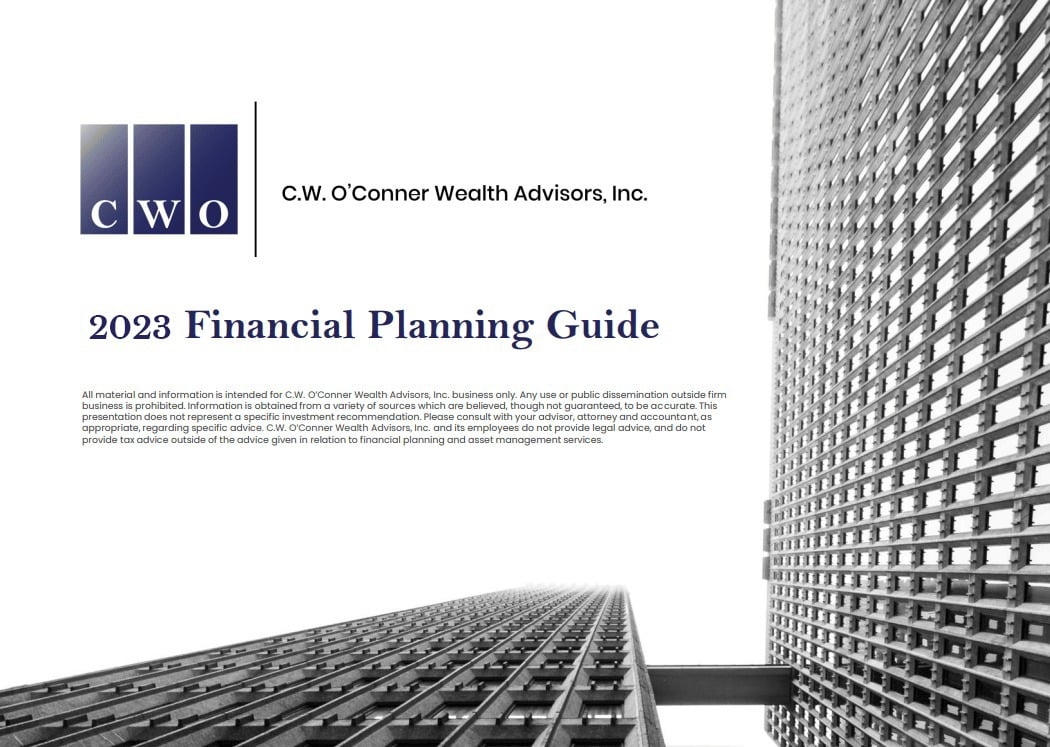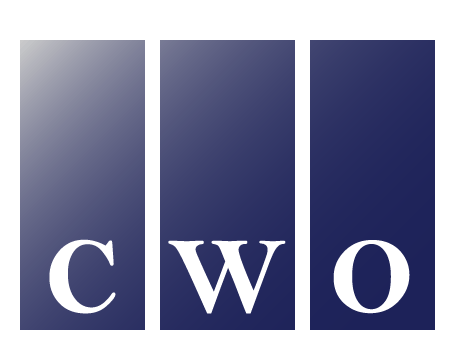
Donor-advised funds (DAFs) have grown in popularity among individuals and families who want to improve their communities and support the causes that are important to them. However, just like other estate planning and giving strategies, DAFs have pros and cons that need to be considered.
This comprehensive guide will assist you in understanding what DAFs are, how they function, their benefits and drawbacks, tax regulations, and comparisons to private foundations. Additionally, we’ll address some frequently asked questions about donor-advised funds and offer details on how you can get started with one of your own.
Table of Contents
- 1 What is a Donor-Advised Fund?
- 2 How Do Donor-Advised Funds Work?
- 3 Donor-Advised Funds Advantages
- 4 Donor-Advised Funds Disadvantages
- 5 Donor-Advised Fund Tax Rules
- 6 Donor-Advised Funds vs Private Foundation
- 7 Donor-Advised Funds FAQs
- 8 How To Set Up A Donor-Advised Fund
- 9 How CW O’Conner Can Help You Further
- 10 Download our 2023 Financial Planning Guide
What is a Donor-Advised Fund?
A donor-advised fund (DAF) is a philanthropic tool designed to facilitate and maximize charitable donations. Sponsoring organizations, which are typically public charities or community foundations, create and oversee DAFs. Donors make irrevocable, tax-deductible donations to these funds and are given advisory rights, which let them recommend distributions from the fund over time to qualified nonprofit organizations.
DAFs provide a number of advantages, including tax advantages, grant-making flexibility, ease of administration, anonymity, and the possibility for investment growth. They are often a go-to option for people, families, and organizations trying to advance the causes closest to their hearts.
How Do Donor-Advised Funds Work?
A donor creates a DAF by choosing a sponsoring organization to handle the funds. They then irrevocably donate assets to the fund, and then immediately deduct those donations from their taxes. After that, the sponsoring organization administers and invests the assets in an effort to raise their value over time.
The donor retains advisory rights over the fund’s asset distributions and can recommend gifts to eligible 501(c)(3) organizations. However, the donor’s recommendations are not legally binding. That said, most sponsoring organizations will accept the donor’s advice as long as it is in accordance with their rules and IRS standards. When a donor’s grant recommendation is approved, the funds are distributed to the qualifying recipient.
Sponsoring organizations are in charge of all DAF-related reporting and record-keeping. They send regular documents to the donor outlining the fund’s balance, investment performance, and grant-making activities, simplifying the donor’s philanthropic efforts and lowering administrative burdens.
In summary, DAFs provide a convenient option for donors to give to and support their favorite charities while receiving tax benefits, advisory privileges, and administrative support.
Donor-Advised Funds Advantages
There are many benefits of donor-advised funds:
Tax advantages: Subject to certain restrictions, contributions to DAFs are tax deductible in the year they are made. When donating appreciated assets like securities, donors may also experience the perk of no capital gains tax as long as such assets have been held for longer than a year.
Asset Versatility: Many different types of assets can be donated to a DAF. These include but are not limited to restricted stocks, publicly-traded stocks, shares of mutual funds, private equity interests, cash, real estate, and cryptocurrencies.
Flexibility: Donors are not constrained by a set timeline or minimum annual distribution requirements and are free to recommend grants to their preferred charities at any time.
Anonymity: Donor privacy is protected by the choice to remain anonymous while making grants.
Investment Growth: The value of assets can increase in a DAF, which in turn increases the amounts available for grants in the future.
Less Expensive: Compared to alternatives such as private foundations, DAFs can have lower administrative and operational costs.
Donor-Advised Funds Disadvantages
Disadvantages of donor-advised funds include:
Lack of Control: Donors have advisory privileges, however, it’s the sponsoring organization that has the final say on grant approvals and investment decisions.
Fees: Sponsoring organizations often charge administrative and investment fees, which can eat away at the amounts available for grants.
Payout Limitations: DAFs cannot make grants to individuals. Additionally, certain types of grants like scholarships or sponsorships may require additional scrutiny or approval.
Irrevocability: Donations of assets into a DAF are irrevocable, which means donors can’t reclaim what they contribute.
Minimum Initial Contributions: Some DAFs have a minimum initial contribution threshold. This barrier of entry may be too costly for some.
Timing Concerns: DAFs are not legally required to distribute funds within a specific timeframe. This can lead to funds sitting idle indefinitely. As a result, the impact of donations can be delayed which can undermine a donor’s haste to give back.
Donor-Advised Fund Tax Rules
Donor-advised fund (DAF) tax rules primarily pertain to the tax deductions available for contributions made to a DAF. The tax deductions are subject to certain limitations based on the donor’s adjusted gross income (AGI). Here’s a breakdown of the tax rules for DAFs:
Tax-Deductible Contributions: When a donor contributes to a DAF, they are eligible for an immediate tax deduction in the year the contribution is made.
Deduction Limits Based on AGI: Tax deductions are subject to limitations based on the donor’s AGI. For cash contributions, the deduction limit is typically 60% of the donor’s AGI. For the donation of long-term appreciated assets (those held for one year or more) like securities or real estate, the limit is 30% of the AGI.
Carryover For Excess Contributions: If a donor’s contributions to a DAF exceed the deduction limits in a given year, they can carry over the excess deductions for up to five years. This carryover allows donors to spread out their deductions and still receive tax benefits for their charitable contributions.
Capital Gains Tax Avoidance: Donors contributing long-term appreciated assets like stocks or real estate to a DAF can potentially avoid paying capital gains tax on the appreciation. When the assets are transferred to the DAF, the sponsoring organization can sell them without incurring capital gains tax, allowing the full value of the assets to be used for charitable grants.
No Tax on Investment Growth: The assets within a DAF can be invested and grow tax-free. This allows for potential growth in the fund’s value, increasing the amount available for future grants to charitable organizations.
Donor-Advised Funds vs Private Foundation
Donor-advised funds (DAFs) and private foundations can both be reliable vehicles for charitable giving. However, the two have key differences in terms of control, administrative burdens, tax benefits, distribution requirements, and privacy:
Control: Private foundations offer more control over grantmaking and investment decisions to their donors compared to DAFs. With a DAF, a sponsoring organization has the final say on grant approvals and investment choices. However, with a private foundation, donors can directly manage the foundation’s operations, establish funding priorities, and exercise greater control over the selection and distribution of grants.
Administrative Burdens: Compared to DAFs, private foundations require more paperwork and administrative burdens. Establishing and maintaining a private foundation requires donors to figure out the delegation of various legal, accounting, and compliance responsibilities. DAFs, on the other hand, have sponsoring organizations take over the administrative burdens.
Tax Benefits: DAFs typically offer more favorable tax treatment to donors when compared to private foundations. This is particularly true when it comes to the deductibility of contributions and avoidance of capital gains tax on appreciated assets. Contributions to DAFs usually have higher deduction limits (60% of AGI for cash, and 30% for long-term appreciated assets) than private foundations (30% of AGI for cash, and only 20% for long-term appreciated assets).
Distribution Requirements: Private foundations have to annually distribute at least 5% of their endowment’s fair market to charitable causes. DAFs, on the other hand, have no minimum distribution requirements. This difference can affect the timing and size of grants that can be made through each of these philanthropic tools.
Privacy: With DAFs, donors have the option to remain anonymous when recommending grants, while private foundations are subject to public disclosure requirements. Information about private foundations, like their financials and grant recipients, is publicly available through their annual tax filings.
Donor-Advised Funds FAQs
Are Donor-Advised Funds 501(c)(3)?
Donor-advised funds (DAFs) themselves are not 501(c)(3) organizations. However, they are typically managed by 501(c)(3) public charities or community foundations that serve as their sponsoring organizations.
These sponsoring organizations are responsible for managing the funds, making investment decisions, and ensuring that grants made from the DAFs comply with IRS regulations and support eligible nonprofit organizations.
Can a Donor-Advised Fund Give Scholarships?
Donor-advised funds (DAFs) cannot make grants directly to individuals, including scholarships. However, donors can recommend grants from their DAFs to nonprofit organizations that provide scholarships. In some cases, the DAF’s sponsoring organization may offer a scholarship program through which donors can establish and support scholarships under the umbrella of their DAF.
The key is that the funds must be granted to a qualified 501(c)(3) public charity, which then administers the scholarship program and awards scholarships to individuals according to their established criteria.
Can a Donor-Advised Fund Pay a Pledge?
Donor-Advised Funds (DAFs) cannot be used to satisfy the terms of a legally-binding pledge agreement. That said, there are ways to provide grants to non-legally-binding “pledges,” but donors need to be careful when doing so. The IRS has specific rules around the use of DAFs for pledges, and failure to adhere to these rules can result in tax penalties.
When using a DAF to pay a non-legally-binding pledge, it’s critical to ensure there is no mention of a charitable pledge by the DAF sponsoring organization when issuing a grant. Donors may not gain any non-incidental benefit from the grant (ex: sports tickets). Additionally, donors cannot claim a charitable contribution deduction for the grant (even if the recipient of the DAF grant mistakenly sends a gift receipt acknowledging the grant).
Please Note: It’s worth consulting with a tax professional and the sponsoring organization before using a DAF to pay a pledge to ensure all activity is compliant with IRS regulations.
Can You Make a QCD to a Donor-Advised Fund?
No, you cannot make Qualified Charitable Distributions (QCDs) to donor-advised funds (DAFs). The rules and regulations governing QCDs specifically exclude DAFs from being eligible recipients. QCDs are tax-free distributions that must be made directly from an individual retirement account (IRA) to a qualifying 501(c)(3) organization.
How To Set Up A Donor-Advised Fund
Setting up and using a donor-advised fund involves the following steps:
Step 1) Research Sponsoring Organizations: Start by researching and selecting a sponsoring organization that aligns with your philanthropy goals. These organizations are typically public charities or community foundations that are experienced in charitable grant-making and investment management.
Step 2) Review The Sponsoring Organization’s Policies: Make sure you have a clear understanding of the sponsoring organization’s policies. This will include their fees, minimum contribution requirements, and investment options. You can find out this information by visiting the organization’s website or contacting them directly.
Step 3) Complete An Application: Fill out the application provided by your chosen sponsoring organization. This will typically require you to provide them with your personal information, any additional account advisors (if applicable), and a name for your DAF.
Step 4) Sign An Agreement: Look over and sign the fund agreement with your sponsoring organization. This agreement outlines the terms and conditions of your DAF, including your advisory privileges, the organization’s responsibilities, and any fees associated with your fund.
Step 5) Make An Initial Contribution: You can donate a variety of assets to your DAF including, but not limited to cash, securities, and real estate. Just make sure your donation satisfies any minimum initial contribution requirements set by your sponsoring organization.
Step 6) Select an Investment Strategy: Decide on an investment strategy for your fund based on your preferences and the options offered through your sponsoring organization. The organization will then invest your assets with the aim of growing their value to increase the amount available for future grants.
Step 7) Start Recommending Grants: Once your DAF is established, you can start making grant recommendations for eligible nonprofits. The sponsoring organization will review your recommendations and, if approved, distribute funding accordingly.
Step 8) Monitor Your DAF: Keep track of your fund’s balance, performance, and grant-making activity by reviewing regular statements provided by your sponsoring organization. You can also work closely with your sponsoring organization to ensure your philanthropic aims are being met.
How CW O’Conner Can Help You Further
At CW O’Conner, we help our clients leverage the flexible, efficient, and tax-advantaged strategy of DAFs to support their chosen causes and make a meaningful impact on their communities. We’re here to help you navigate all the complexities of financial planning that come along with charitable giving.
Our team of experienced professionals can provide expert guidance and support in setting up your DAF, ensuring your philanthropic goals are met, and regularly reviewing that your assets are managed responsibly. We can also help evaluate other charitable giving tools that may be used instead of, or in addition to, your DAF.
Don’t wait to make a difference in the world! You can reach out to us directly at 770-368-9919, or fill out a contact card and we’ll reach out to you.
The opinions and analysis expressed herein are based on C.W. O’Conner Wealth Advisors, Inc. research and professional experience and are expressed as of the date of this report. Please consult with your advisor, attorney and accountant, as appropriate, regarding specific advice.
Download our 2023 Financial Planning Guide







